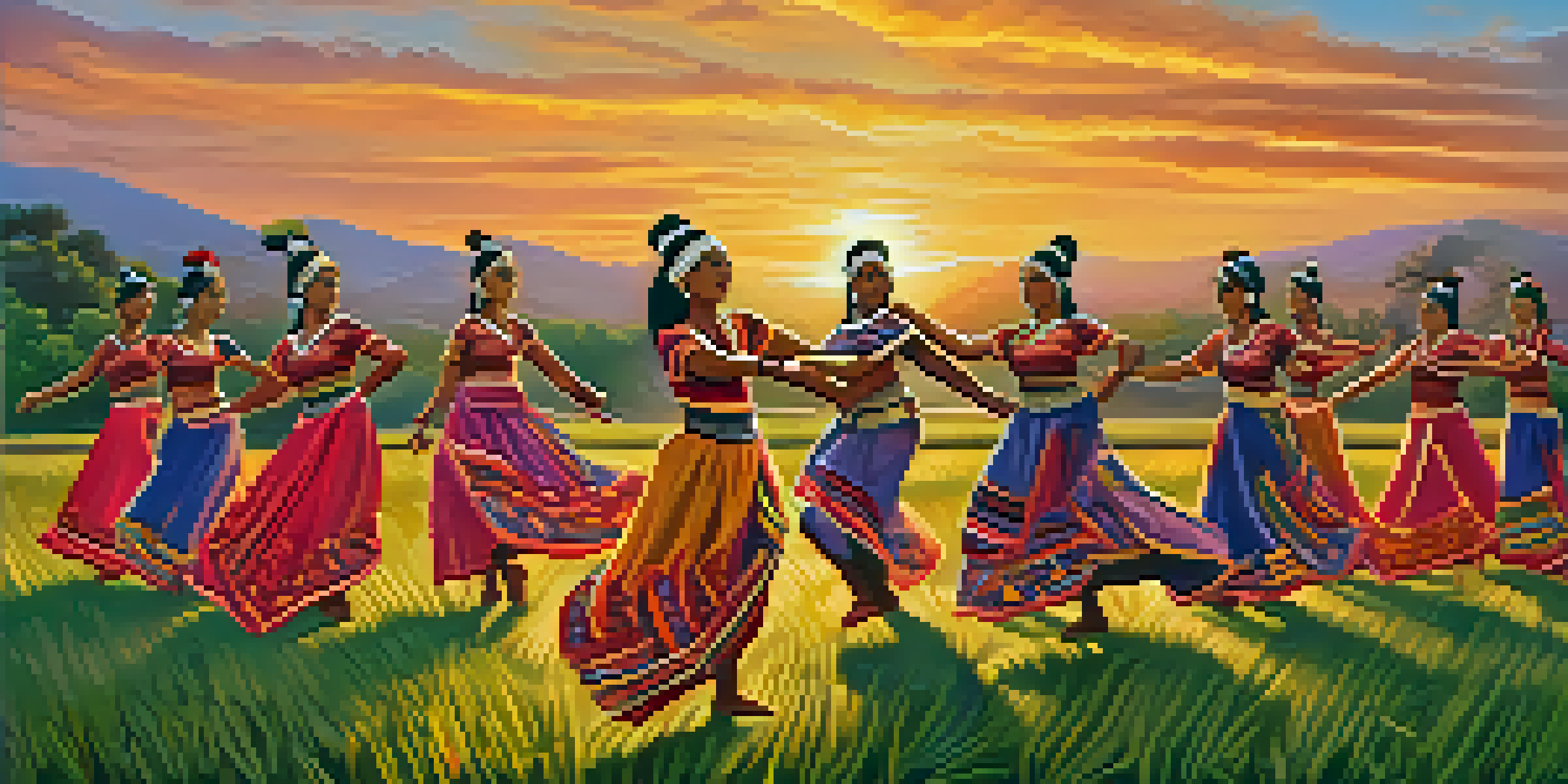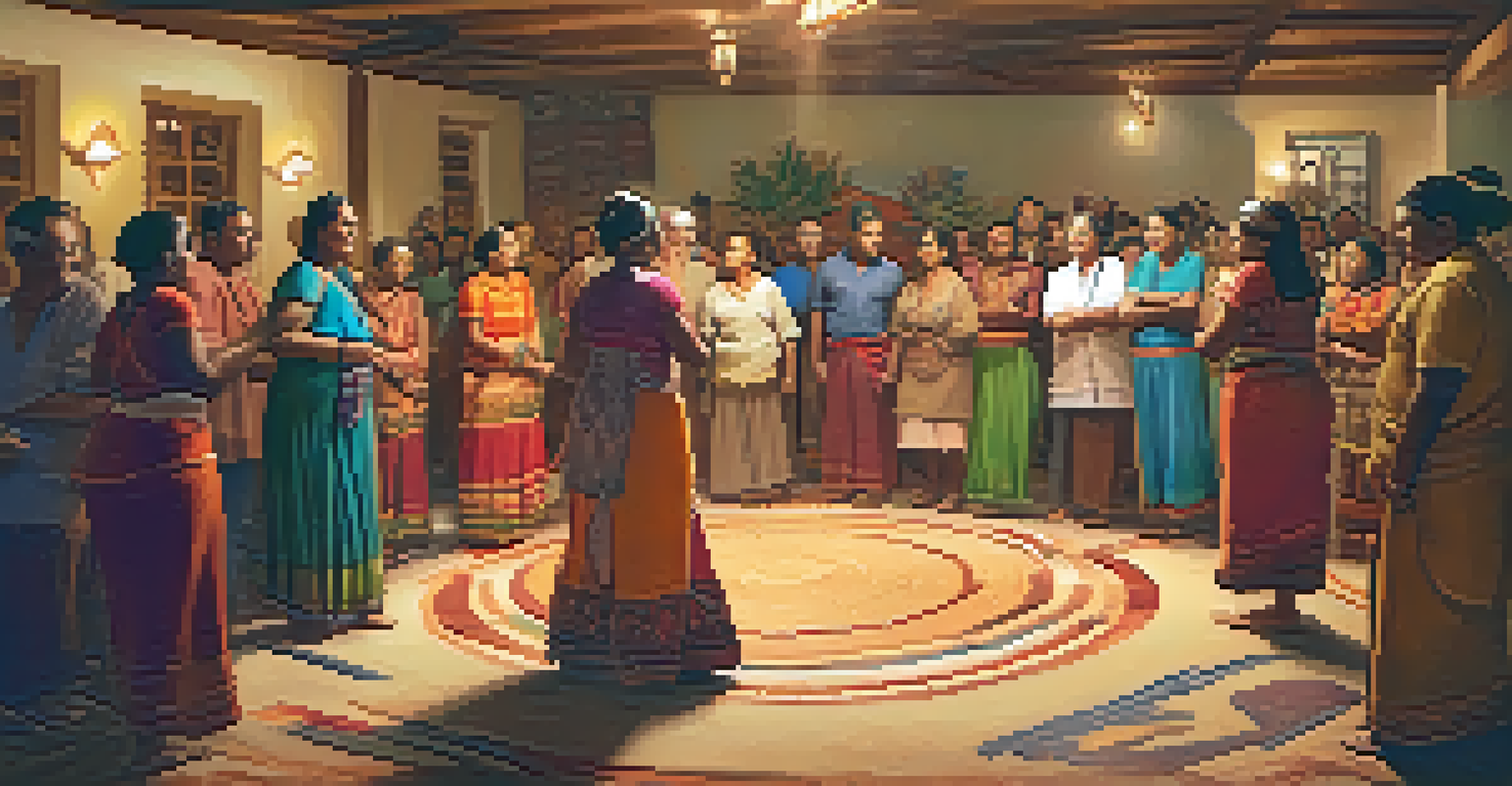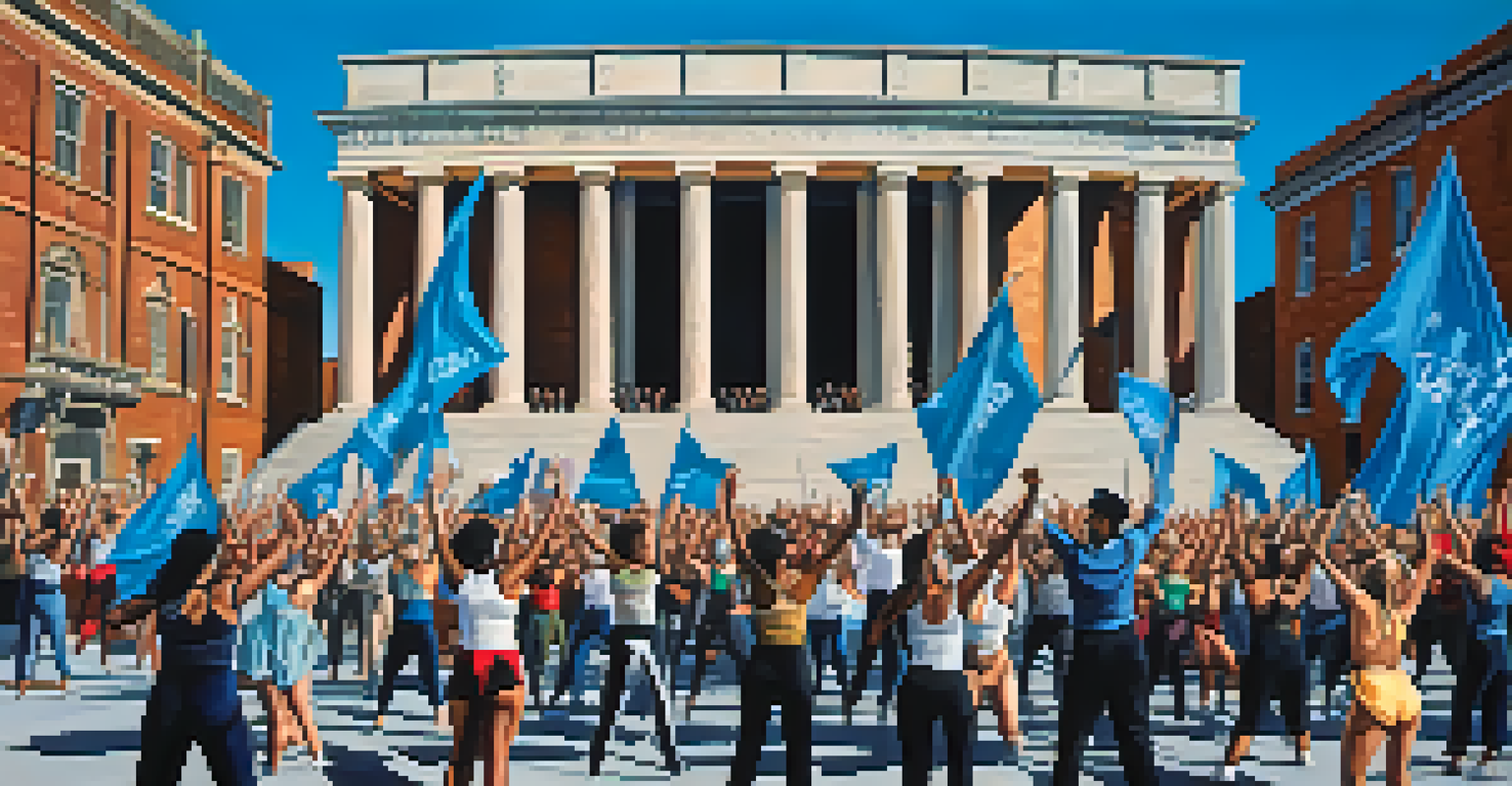Dance as a Form of Resistance in Indigenous Cultures

Understanding Dance as a Cultural Expression
Dance in Indigenous cultures is not just an art form but a vital expression of identity. It serves as a means of storytelling, passing down traditions, and sharing communal values. Each movement often embodies deep historical significance, connecting performers to their ancestors and heritage.
Dance is the hidden language of the soul.
For many Indigenous groups, dance acts as a vessel for spiritual connection and community bonding. It can evoke shared emotions, celebrate milestones, and commemorate events that shape the community. This cultural expression is not merely for entertainment; it carries profound meanings.
Through dance, Indigenous peoples celebrate their uniqueness while also reclaiming their narratives. In a world that often seeks to marginalize their voices, these performances become acts of resistance, asserting their presence and resilience.
Historical Context of Dance in Indigenous Cultures
Historically, Indigenous dances have reflected the changing tides of colonization and cultural suppression. Many Indigenous peoples faced restrictions on their dance practices, leading to a disconnection from their traditions. However, these challenges sparked a resurgence in the desire to reclaim cultural expression.

The banning of traditional dances was not just an attack on art; it was an attempt to erase identities. In response, many Indigenous communities turned to dance as a form of resistance, reaffirming their cultural heritage. This resistance highlights the resilience and adaptability of these communities.
Dance as Cultural Identity
For Indigenous peoples, dance serves as a vital expression of identity and a means of storytelling that connects them to their heritage.
Dances often evolved to incorporate elements of protest, addressing the injustices faced by Indigenous peoples. For instance, movements may symbolize resistance against land dispossession or the fight for rights and recognition, making dance a powerful tool for social change.
Modern Interpretations of Traditional Dance
In contemporary settings, Indigenous dance has adapted to reflect current issues while retaining its core meanings. Many dancers infuse modern styles with traditional movements, creating a fusion that resonates with younger generations. This blending ensures that cultural practices remain relevant in today's society.
The dance is a poem of which each movement is a word.
Events like powwows serve as platforms for showcasing these modern interpretations, attracting diverse audiences. Such gatherings encourage cross-cultural dialogue and foster appreciation for Indigenous artistry. By participating, attendees often gain insight into the complexities of Indigenous identity and history.
Moreover, the visibility of modern Indigenous dance in mainstream media amplifies its impact. Dance performances become not just a form of resistance, but also a celebration of culture, showcasing the beauty and strength of Indigenous peoples to a broader audience.
Dance as a Tool for Healing and Empowerment
For many Indigenous communities, dance serves a therapeutic purpose, facilitating healing and empowerment. After generations of trauma, the act of dancing can help individuals and communities reclaim their narratives. It fosters a sense of belonging and identity, combating feelings of isolation.
Participating in dance allows individuals to express emotions and experiences that may be hard to articulate. The rhythmic movements can be meditative, creating a space for reflection and connection with one's roots. This healing process is essential for cultural preservation and resilience.
Dance in Activism
Choreographed performances have become a powerful medium for Indigenous activism, raising awareness and advocating for social justice.
Through collaborative dance practices, community members find strength in unity. As they come together, they reinforce their collective identity and foster a supportive environment, empowering each other in the face of ongoing challenges.
The Role of Dance in Activism
Dance has become a powerful medium for activism within Indigenous movements. Through choreographed performances, dancers can convey messages of resistance against social injustices. Such expressions resonate deeply, often sparking conversations and raising awareness in wider communities.
For instance, flash mobs or public performances at significant sites can draw attention to pressing issues like land rights or environmental protection. These acts not only engage participants but also invite onlookers to reflect on the issues at hand. Dance thus becomes a dynamic tool for advocacy.
Moreover, the melding of traditional dances with contemporary themes allows for a broader reach. By appealing to diverse audiences, Indigenous activists can share their stories and struggles, fostering understanding and solidarity.
Intercultural Exchange Through Dance
Dance offers a unique avenue for intercultural exchange, fostering understanding between Indigenous and non-Indigenous communities. Through workshops and performances, people can learn about the significance of various dances and the histories behind them. This exchange promotes respect and appreciation for Indigenous cultures.
Collaborative projects that mix Indigenous dance with other art forms encourage creative dialogue. Such initiatives can break down barriers, allowing individuals from different backgrounds to share their experiences. This sharing enriches the cultural landscape and builds bridges of understanding.
Intercultural Exchange Through Dance
Dance fosters intercultural exchange, promoting understanding and respect between Indigenous and non-Indigenous communities.
Ultimately, these intercultural interactions can lead to greater recognition of Indigenous rights and issues. As more people engage with the art of dance, they become advocates for respect and preservation of Indigenous cultures.
The Future of Dance in Indigenous Resistance
As we look to the future, dance will undoubtedly continue to play a significant role in Indigenous resistance. The ongoing evolution of dance reflects the adaptability and resilience of Indigenous cultures. New generations are stepping up, blending traditional movements with contemporary messages to address modern challenges.
With the rise of social media and digital platforms, Indigenous dancers can reach global audiences, sharing their stories and struggles on a larger scale. This visibility is crucial in raising awareness about Indigenous issues and promoting cultural pride. It allows for a broader conversation about identity and resistance.

In this ever-changing landscape, dance remains a powerful form of expression, a testament to the strength of Indigenous cultures. Through movement, these communities will continue to assert their identities, celebrate their histories, and inspire future generations.